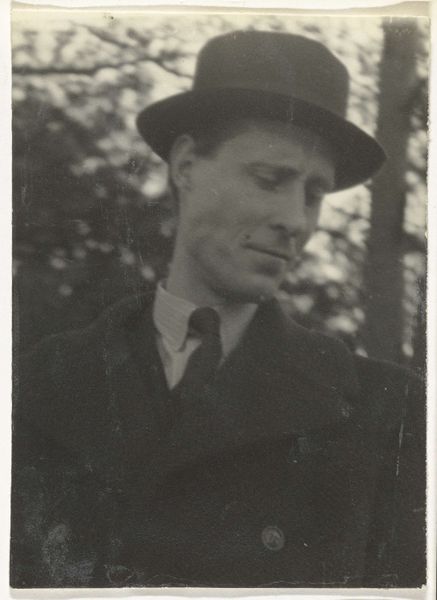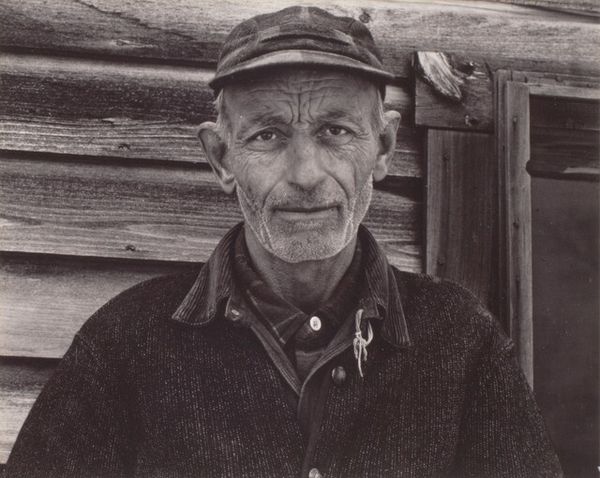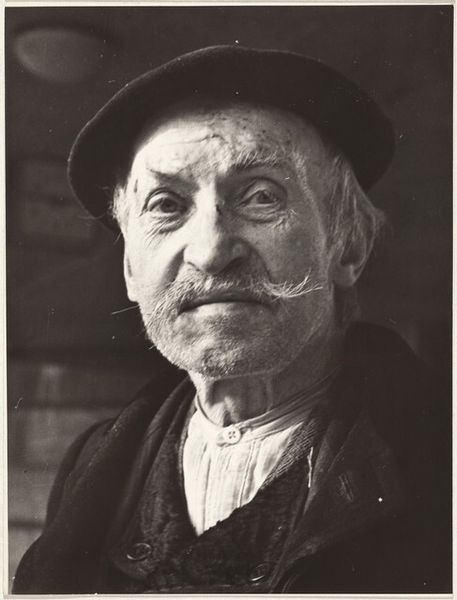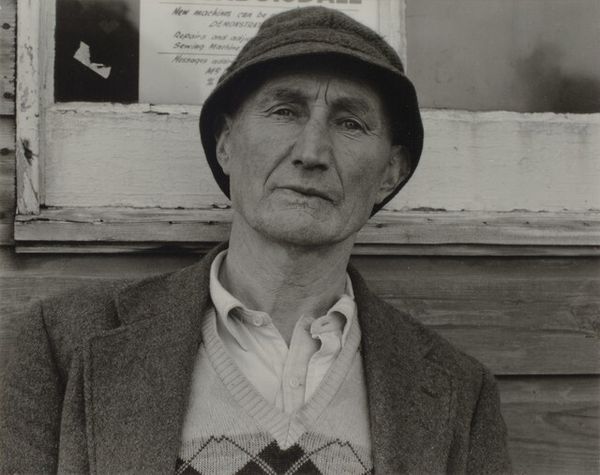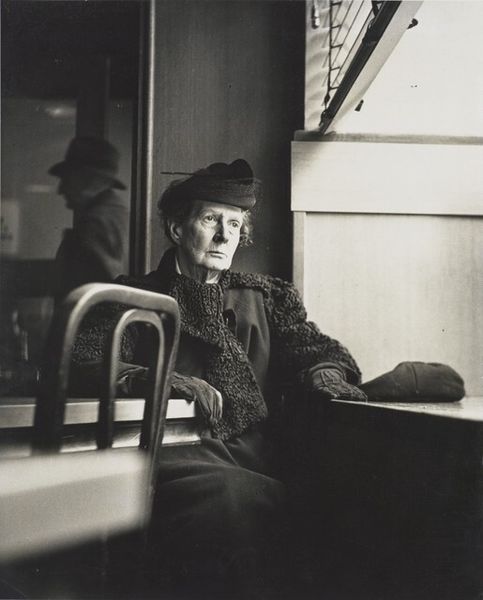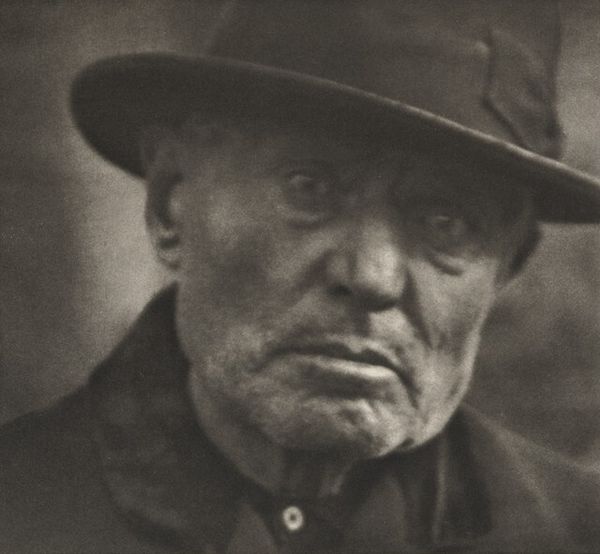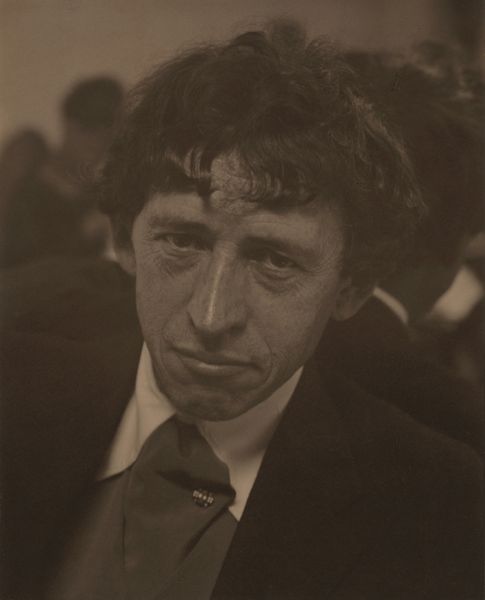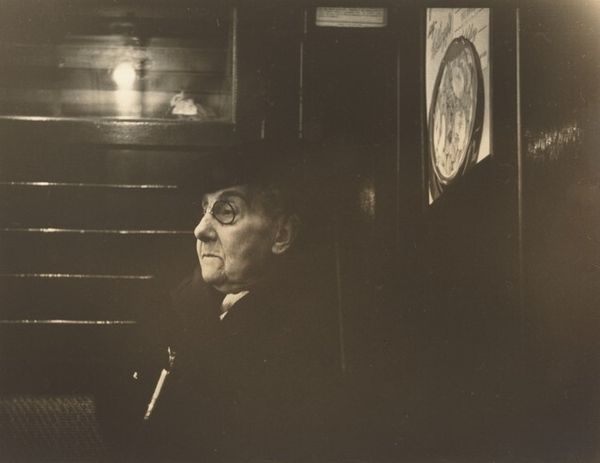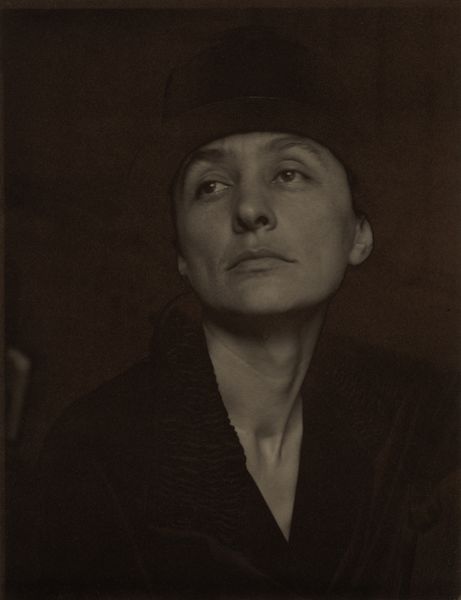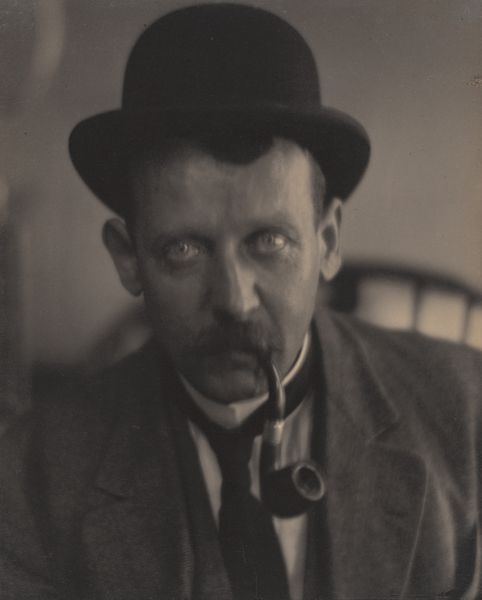
Dimensions: sheet: 16.7 x 13 cm (6 9/16 x 5 1/8 in.)
Copyright: National Gallery of Art: CC0 1.0
Curator: Welcome to the gallery. Here we have Walker Evans's photograph, "Subway Portrait," created between 1938 and 1941. What are your initial thoughts? Editor: The grainy texture lends an immediate aura of melancholy. It looks almost voyeuristic, like we're intruding on a very private moment of introspection. Curator: Indeed. Evans meticulously documented the lives of ordinary people. In terms of production, this subway series exemplifies hidden-camera techniques; he sought to capture unguarded moments. We're witnessing not just a likeness, but the physical manifestation of labor, time, and circumstance etched upon his face. The quality of the film, the camera, the subway itself—all cogs in the wheels of a system. Editor: Precisely! It also underscores themes of class and anonymity, common in documentary photography of that era. The man's weathered face, the working-class cap... it speaks to a life likely shaped by economic hardship and perhaps societal marginalization. You can't divorce this image from the context of the Great Depression and the rise of industrial America, with its inherent inequalities. Consider who *didn't* get photographed this way; who had the agency and power to be represented versus captured unaware. Curator: Consider also the constraints placed upon Evans himself. Did his practice uphold documentary honesty? His process speaks of that ambition, the quality, tone, and composition that delivers the weight of the human condition, a shared empathy to all levels of society in that time. Editor: The implicit biases are unavoidable, of course. However, I appreciate how it also subtly challenges ideas of representation. This is not a portrait in the traditional sense, it subverts assumptions about the act of photographic depiction and identity. There is no studio, no posed expression; only a raw unadorned fragment of an existence framed by urban transportation and socioeconomic stratification. Curator: That resonates strongly. A seemingly candid capture of labor and materials, and the system that supports it all. I am happy to look upon this work with you today. Editor: Indeed, it reveals how the social and political can in fact shape what appears candid. Food for thought, indeed.
Comments
No comments
Be the first to comment and join the conversation on the ultimate creative platform.

